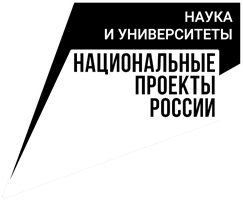Organizing Committee
- Huijun Fan (SMS PKU)
symplectic geometry and mathematical physics, geometric analysis - Sergey Gorchinskiy (MI RAS)
algebra and geometry: algebraic geometry, K-theory - Hailiang Li (SMS CNU)
fluid mechanics, partial differential equations, analysis - Jinsong Liu (AMSS)
algebraic geometry: singularity theory - Yi Liu (BICMR)
Topology of 3-manifolds, hyperbolic geometry - Denis Osipov (MI RAS)
algebraic geometry, number theory, integrable system - Ye Tian (UCAS, AMSS)
Number Theory, Arithmetic Geometry, Iwasawa Theory - Alexey Tuzhilin (MSU)
geometry: Riemannian and metric geometry - Yue Yang (CE PKU)
computation mathematics and mechanics - Ping Zhang (AMSS)
P. D. E.: fluid equation and semi-classical analysis - Alexander Zheglov (MSU)
geometry: algebraic geometry, integrable system
PROGRAM
11:00 (GMT+3)
| Guchuan Li Peking University |
|
|
Bio: Guchuan Li is presently an assistant professor at Peking University, Beijing, China. His research interest lies in algebraic topology, especially chromatic homotopy theory. He obtained his Ph.D. in mathematics from Northwestern University in 2019 under the supervision of Paul Goerss. |
|
Vanishing lines in chromatic homotopy theory.
Chromatic homotopy theory studies periodic phenomena in stable homotopy theory via fixed points of Lubin-Tate theories. The homotopy groups of these homotopy fixed points are periodic and computed via homotopy fixed points spectral sequences. In this talk, we present a result of an upper bound of the complexity of these computations. In particular, at the prime 2, for any given height, and a finite subgroup of the Morava stabilizer group, we find a number \(N\) such that the homotopy fixed point spectral sequence of collapses after page \(N\) and admits a horizontal vanishing line of a certain filtration \(N\). The proof uses new equivariant techniques developed by Hill-Hopkins-Ravenel in their solution of the Kervaire invariant one problem and has applications to computations. This is joint work with Zhipeng Duan and XiaoLin Danny Shi.
12:00 (GMT+3)
| Oleg Sheinman MI RAS |
|
|
Bio: Professor Oleg Sheinman is a leading scientific researcher at the Steklov Marthematical Institute of Russian Academy of Sciences in Moscow and he is also a Professor at the Independent Moscow Universuty. He graduated from the Moscow State University (MSU), Department of Mathematics and Mechanics. He obtained PhD in 1982. He obtained the Doctor of Physics-Mathematics Sciences (Russian analogue of habilitation) in 2007. Since 2000 he works at the Steklov Mathematical Institute of RAS. The main scientific interests of Oleg Sheinman include infinite-dimensional Lie algebras (Krichever-Novikov algebras, Lax operator algebras), representation theory, related problems of geometry of moduli spaces and mathematical physics, integrable systems. |
|
Hitchin systems: how to solve them.
Hitchin systems are remarcable finite-dimensional integrable systems intrinsically related to the moduli space of holomorphic \(G\)-bundles on a Riemann surface. There is a vast literature on algebraic, Lagrangian and differential geometry of Hitchin systems, and their generalizations like parabolic Hitchin systems, Sympsom systems. However, only a few works are devoted to a natural question: how to solve them. These are the works by J.C. Hurtubise, A. Gorski-N.Nekrasov-V. Rubtsov, K. Gawedzki, I. Krichever (all of them about 1990-2000), and several recent papers of the author. Also there is only a short list of explicitly resolved Hitchin systems, which includes systems with \(G=GL(n)\) on a curve of arbitrary genus, and with \(G=SL(2), SO(4)\) for genus 2. There exist basically two methods of exact solution of finite dimensional integrable systems. These are the classical method of Separation of Variables (SoV), and Inverse Spectral Method (ISM) which is a great modern achievement. Both of them apply to Hitchin systems, and both finally result in theta function solutions. However, so far the ISM is applicable only for \(G=GL(n)\) while SoV is working also for simple groups. In this talk we focus on the method of Separation of Variables. It goes back to Hamilton and Jacobi, its modern form is due to Arnold and Sklyanin. Majority of classical (finite-dimensional) integrable systems had been resolved by means of SoV. As for Hitchin systems, Separation of Variables gives also a simplest way to define them. In the talk, I shall define Hitchin systems both following Hitchin'87, and by means of SoV, and prove their integrability. For the systems on hyperelliptic curves by means of methods of symplectic geometry I'll derive a fundamental fact that Hitchin trajectories are straight lines (windings) on certain Abelian varieties replacing Liouville tori in this context (namely, on Jacobians/Prymians of the corresponding spectral curves). In the case \(G=GL(n)\) I'll give an explicit theta function formula for solutions, and explain how it can be generalized onto the case of a simple group \(G\).
The meeting will be held in the form of a webinar on the Voov platform.
1) Download VOOV from here https://voovmeeting.com/mobile/downloadindex.html
2) Install it and register in it naturally (registration by e-mail).
3) However, if you have some difficulties, please, consult to https://zhuanlan.zhihu.com/p/589899174?utm_id=0
To Join Tencent Meeting:https://meeting.tencent.com/dm/hqYEj68Ft9hH
Meeting ID:638-406-013
Password:202403

